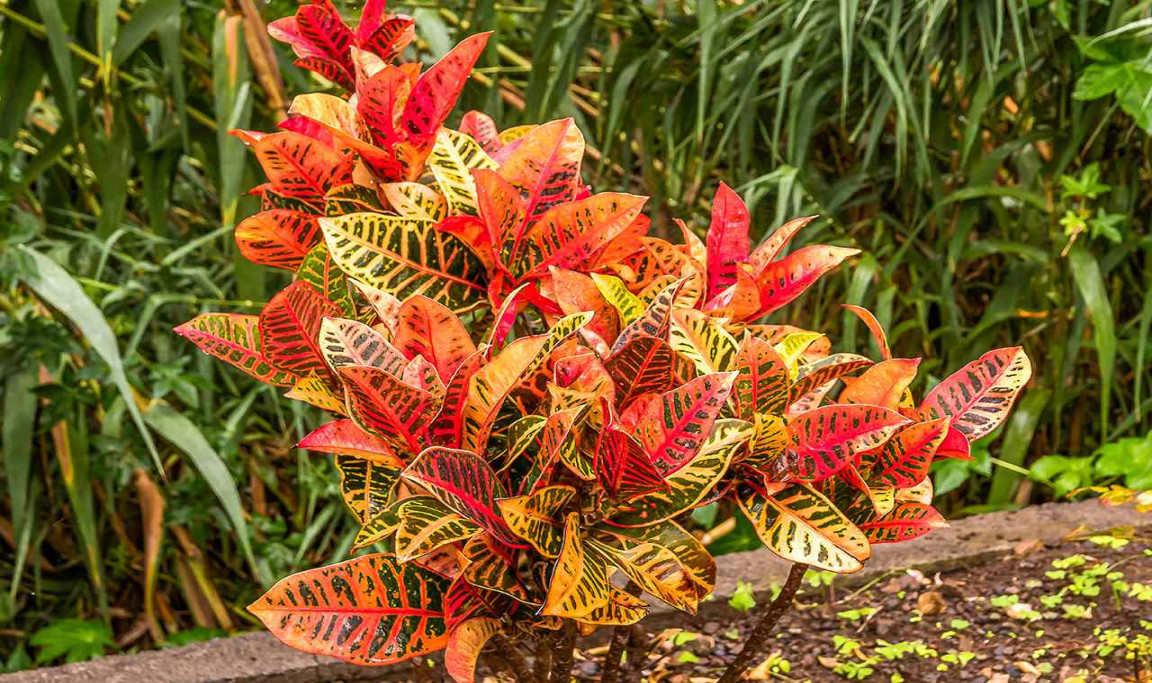Croton Plant: A Colorful Addition to Your Home
What do you mean by Croton Plant?
The Croton plant, also known as Codiaeum variegatum, is a popular houseplant known for its vibrant and colorful foliage. It is native to tropical regions of Southeast Asia and the Pacific Islands. The plant features leathery, colorful leaves that come in a variety of shades including red, orange, yellow, and green.
How to care for Croton Plant?

Croton plants are relatively easy to care for, but they do require some specific conditions to thrive. They prefer bright, indirect light and should be placed near a window where they can receive plenty of sunlight. The plant also requires regular watering, but be careful not to overwater as this can cause root rot. It is best to let the top inch of soil dry out before watering again.
What is known about Croton Plant?
In addition to their colorful foliage, Croton plants are also known for their air-purifying properties. They can help to remove toxins from the air, making them a great addition to any indoor space. The plant is also relatively low-maintenance, making it a popular choice for beginners and experienced plant enthusiasts alike.
Solution for common Croton Plant problems
If you notice your Croton plant’s leaves are turning brown or yellow, it may be a sign that the plant is not getting enough sunlight or is being overwatered. Try moving the plant to a sunnier spot and adjusting your watering schedule. You can also mist the leaves with water to increase humidity and prevent them from drying out.
Information about Croton Plant
Croton plants can grow quite large if given the proper care and conditions. They can reach heights of up to 6 feet tall, making them a striking focal point in any room. The plant is also easy to propagate, making it simple to create new plants from cuttings. Simply take a cutting from a healthy plant and place it in water or soil to encourage root growth.
Why choose Croton Plant?
There are many reasons to choose a Croton plant for your home. Not only are they beautiful and colorful, but they also have air-purifying properties that can help to improve the overall air quality in your space. Additionally, Croton plants are relatively low-maintenance and easy to care for, making them a great choice for both beginners and experienced plant enthusiasts.
How to decorate with Croton Plant?
Croton plants can be used to add a pop of color and texture to any room in your home. They look especially striking when placed in a bright, sunny spot where their colorful foliage can shine. Try placing a Croton plant on a windowsill, shelf, or side table to create a focal point in the room. You can also mix and match different varieties of Croton plants to create a visually interesting display.
Conclusion
In conclusion, the Croton plant is a colorful and vibrant addition to any home. With its striking foliage and air-purifying properties, it is a great choice for both beginners and experienced plant enthusiasts. By providing the plant with the proper care and conditions, you can enjoy its beauty and benefits for years to come.
Frequently Asked Questions
1. How often should I water my Croton plant?
It is best to let the top inch of soil dry out before watering again. Water the plant when the soil feels dry to the touch.
2. What type of light does a Croton plant need?
Croton plants prefer bright, indirect light. Place them near a window where they can receive plenty of sunlight.
3. Can I propagate a Croton plant from cuttings?
Yes, Croton plants are easy to propagate from cuttings. Simply take a cutting from a healthy plant and place it in water or soil to encourage root growth.
4. What are common problems that Croton plants face?
Some common problems with Croton plants include browning or yellowing leaves, which can be caused by too little sunlight or overwatering.
5. Are Croton plants toxic to pets?
Yes, Croton plants are toxic to pets if ingested. Keep them out of reach of pets and children to prevent accidental ingestion.
